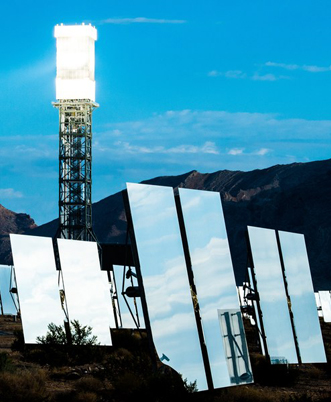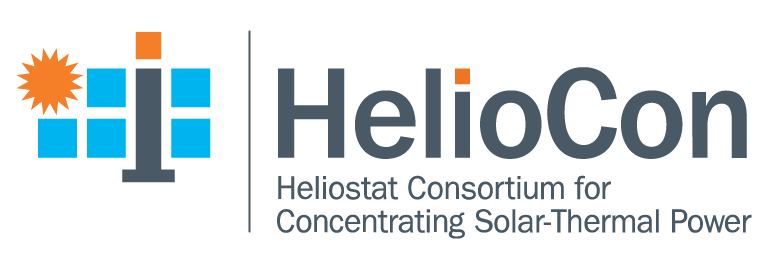
Advanced Manufacturing
Lead: Randy Brost, SNL, rcbrost@sandia.gov
Co-lead: Parthiv Kurup, NREL Parthiv.Kurup@nrel.gov
The task of manufacturing heliostats begins with raw materials and ends with a field of fully functional installed heliostats. Beyond raw material cost, manufacturing cost (including tooling capital and non-recurring engineering costs) determines the cost of the installed heliostat field. Heliostat manufacture also determines the accuracy of the mirrors which reflect solar energy to the receiver. Thus heliostat manufacture directly influences both solar field cost and revenue, and is a major contributor to overall CSP economic performance.
Manufacturing is intimately tied to design, as heliostat design determines both achievable optical accuracy and also required manufacturing processes. Since the simultaneous design of products and processes is well-known as a powerful approach to improving product economic performance, we include heliostat design within the scope of advanced manufacturing.
Heliostats include many components produced by mature, well-understood processes (posts, torque tubes, drive motors, etc). While these are mature processes, heliostat designs may still be improved by making best use of state-of-the-art materials and components optimized for high-performance manufacturing. Automation provides an opportunity for improving productivity, but has been challenging due to limited production runs and market uncertainty which confound capital justification. Specific to heliostats are their large arrays of mirrors with very shallow curvature meeting precise optical tolerances; this is an area with significant opportunities for both product and process improvement. With these observations in mind, we conducted multiple surveys of CSP and manufacturing industry experts and developed a detailed list of gaps where the current state of the art may be improved. Here is a brief summary of the highest priority issues we identified for improving heliostat manufacturing:
- Lack of a stable market enabling capital investment and continuous improvement.
- Wind load data/analysis to enable location-specific mass reduction.
- Optimum heliostat composite facet/mirror array design.
- Facet/array fabrication process knowledge, including multiple prescriptions.
- Lack of experience designing heliostats for high productivity manufacturing.
- Lack of experience designing high productivity manufacturing lines.
